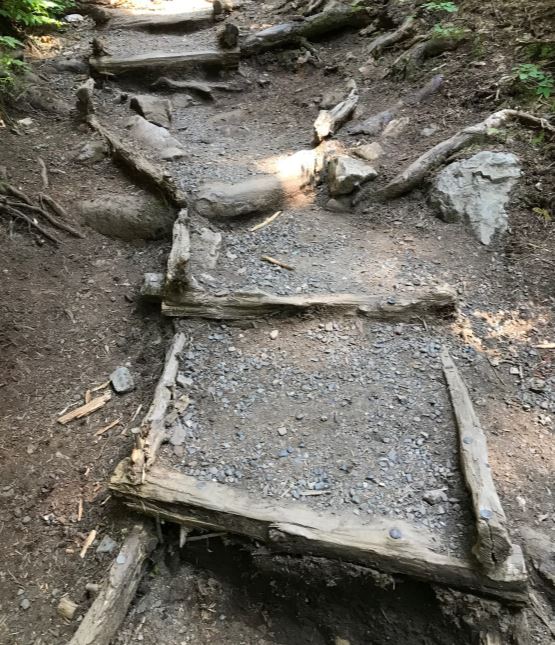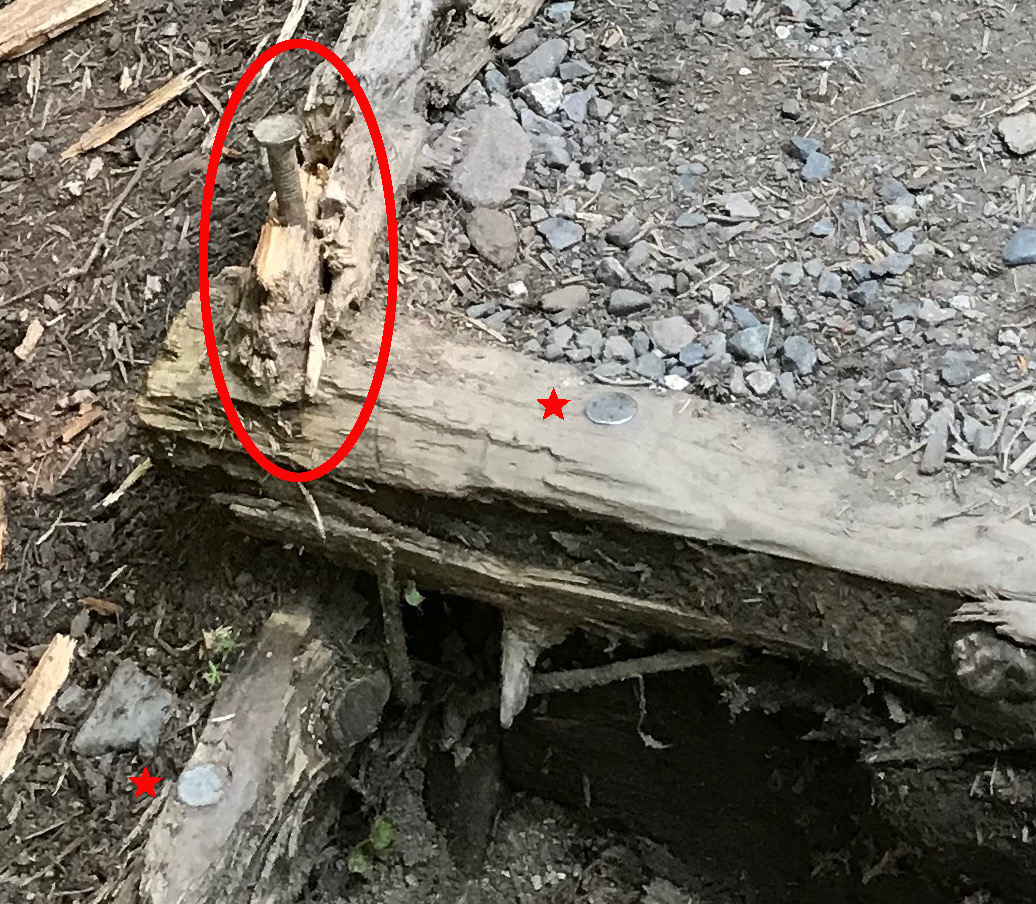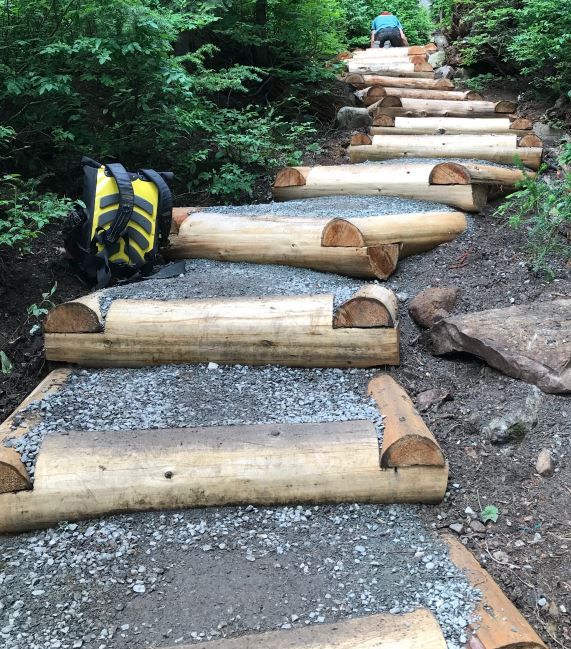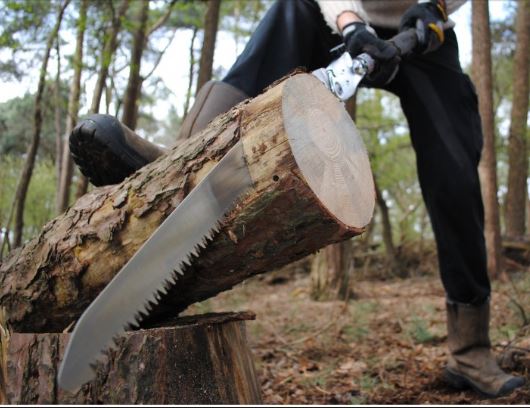Trailhead step replacement
First photo below:
No one seems to know when, but wood and rock steps were constructed to connect the parking area to an existing trail.
Farther down the valley the trail had been destroyed by snow/rock falls.
The wood used for the original steps was sourced on-site (nearby), and was not particularly large or robust. This was sort of a fix it with what you got thing.
These steps may have been here for 50 years. Each year thousands of people use this trail, and as the population of the region grows, so does the foot traffic. (John doesn’t think it is a good trail for little kids and dogs. He is vastly outnumbered in this regard.) Someone estimated there are 500 feet of these old steps and gravel platforms.
Someone estimated there are 500 feet of these old steps and gravel platforms.
The next image is a blow-up of the lower left corner of the first step. The wood pieces overlap and are held together with large nails (spikes). The oval shows an end that is nearly gone, with the nail in its original position. The two red stars indicate other nails in the structure. There are hundreds of nails.
The wood pieces overlap and are held together with large nails (spikes). The oval shows an end that is nearly gone, with the nail in its original position. The two red stars indicate other nails in the structure. There are hundreds of nails.
Inside the wood pieces, the volume is filled with rock chunks, and then finished with smaller pieces – gravel. That is, tons of stone.
To replace these requires removing all the wood, getting the nails out, removing all the rock and gravel, and digging trenches for new wood.
The photo shows larger wood with half-lap construction. The log is cut to length and the half-cut at the end was done with a folding saw; brand Silky Katanaboy.  For this project the cut is farther from the end, to match the size of the piece it will be fit to. A hammer and chisel are used to remove the unwanted part.
For this project the cut is farther from the end, to match the size of the piece it will be fit to. A hammer and chisel are used to remove the unwanted part.
When a box is in place, it has to be filled with rock and then topped with gravel, or other appropriate tread material. The US Forest Service is providing the wood, rock, and gravel – to the trailhead.
As the steps are built all of the trips get longer. Rock and gravel are toted in 5 gallon buckets, about half full, weighing about 40 pounds each.
The crew completes 3 or 4 steps each day, depending on the length and thus volume of the platform created. The longer the platform, the greater the digging and removing of the old, and the more carrying of things up the hill.